|
|
|
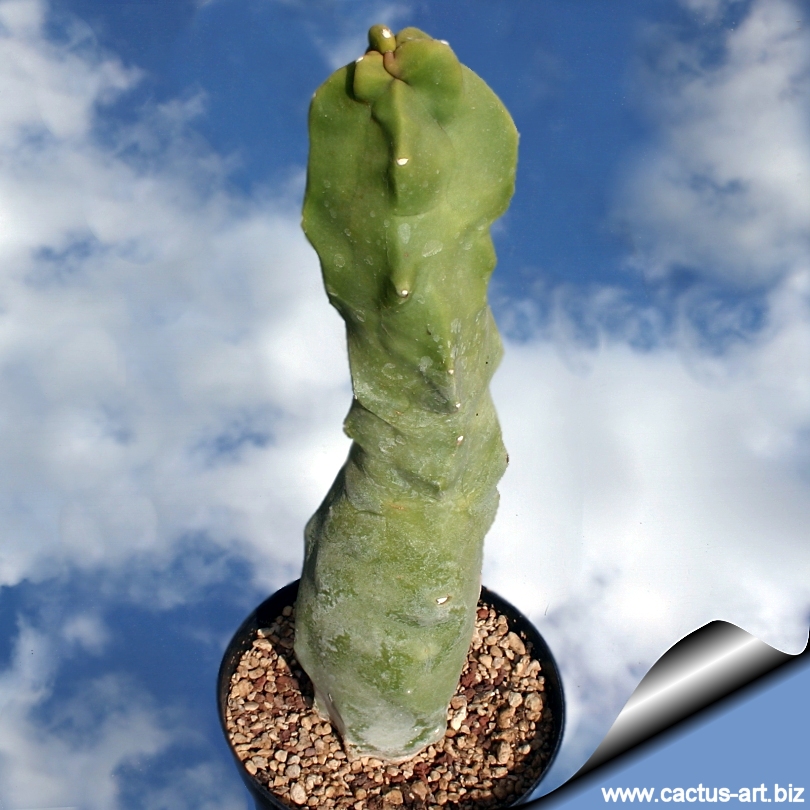
Totem Pole Cactus (Lophocereus schottii var. monstrosus 'forma
mieckleyanus' )
|
Description:
Lophocereus schottii
var. monstrosus 'forma mieckleyanus' is a slow-growing
usually trunkless cactus that forms numerous tall,
ascending, columnar stems which branch at the base in a candelabra-like
arrangement. Stems have a waxy bloom on the surface and reach a height
of 3-4 metres (but can grow up to 7m high) and are 10 to 12cm in
diameter. This mostruos mutation has
variable, irregularly shaped ribs whit sparse areoles. This form has
thinner stems with less tubercles. Stems are ascending but not straight
with irregular bumps, slim, lightly
pruinose,
and also branch just from the base and
occasionally at higher levels, reverting
sometimes to normal species growths. Some stems reach 6m,
but they usually remain smaller (from 2 to 3m
tall). The flowers are virtually unknown. The stems mark quite badly
with age, due to
weathering and old age.
|
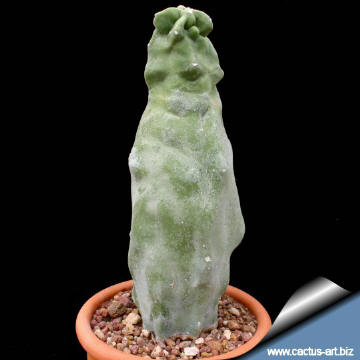 |
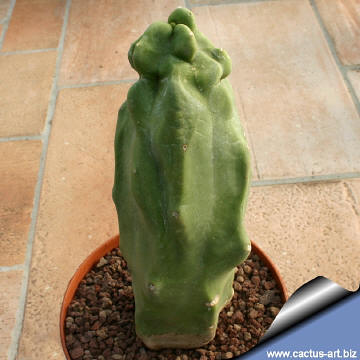 |
|
. |
 |
 |
|
. |
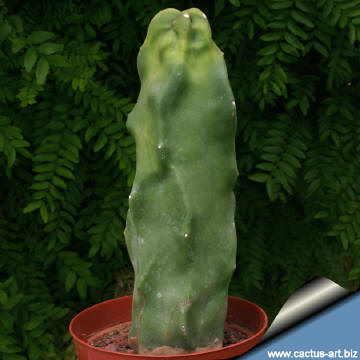
|

|
|
Photo of conspecific taxa, varieties, forms and cultivars of
Lophocereus schottii .


Advertising
|
|
|
|
|
Family:
Cactaceae (Cactus
Family)
Scientific name: Lophocereus
schottii var. monstrosus
'forma mieckleyanus'
Origin:
Garden origin (Nursery
produced cultivar)
Conservation status: Listed in
CITES appendix 2.
Common Names include: Totem Pole Cactus
Synonyms:
- Lophocereus mieckleyanus: (Wgt.) Backbg.
Cactac. Handb. Kakteenk. 4. 2285, 1960
- Lophocereus schottii f. mieckleyanus G. E. Lindsay
Cactus and Succulent Journal [U. S. ] 35: 184, 1963
- Lophocereus schottii f. monstrosus
H. E. Gates Cactus and Succulent Journal [U. S. ] 3:
38, 1931
- Lophocereus schottii v. tenuis G. E. Lindsay
Cact. Succ. J. (Los Angeles) 35: 187, fig. 6, 7.,
1963
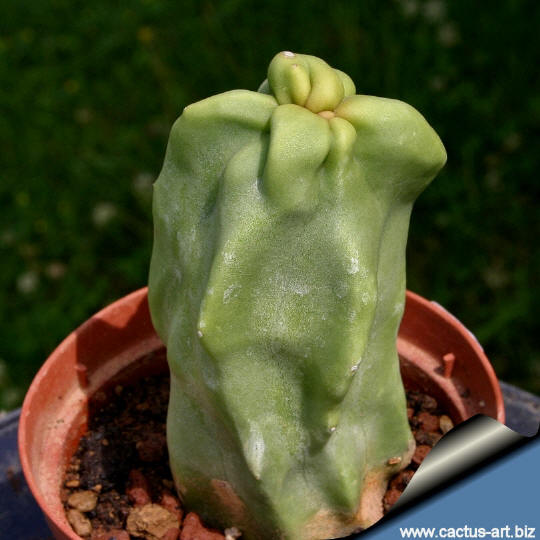
|
|
|
|

This cultivar differs from the
standard monstrous form for the thinner and less tubercled
habit.
Cultivation: This species presents no problems
in cultivation and will do well in a sunny spot in a cactus house. These
plants will tolerate extreme sun and heat, but not extended periods of
frost. They can survive to a minimum temperature
of -4, but the growing tips need protection. The monstrose form is more
frost sensitive and should not be kept at less
than -0°C . They will tolerate severe drought if they have a large
colony of stems. Grow them in rich, porous, sandy soil,
and let their soil dry out between waterings. If potted, repot in the
spring, if their roots become cramped. Generally,
they should be repotted every other year in order to provide fresh soil.
However, this doesn't necessarily mean they'll need larger containers.
Fill about a quarter of the pot with broken crocks, gravel, etc. to
promote good drainage. After repotting, do not water for a week or more.
The monstrose plants enjoy a warm sunny environment and for more speedy
growth a light position on a higher shelf with light feeding and
rainwater given to the bottom of the plant will ensure success,
especially with rooted detached branches, which do well in these
conditions. Often plants can be seen with a root or two projecting from
a lower stem. Plants in cultivation will begin to get a bit tatty after
several years, and if you wrap an offset in
newspaper and send it to your friend through the post, it will probably
get marked anyway.
Propagation: L. schottii
var. monstrosus 'forma mieckleyanus' does not apparently flower
or seed. All specimens also in cultivation must
at one time have been propagated vegetatively. It
can be increased by cuttings, which will take root in a minimum
temperature of 20° C. Cuttings of healthy shoots can be taken in the
spring and summer, Cut the stem with a sharp, sterile knife just above a
bud or shoot (a 7-20 cm long tip or branch is most suitable for
propagation). Leave the cutting in a warm, dry
place for a week or weeks (depending on how thick the cutting is) until
a callus forms over the wound. Once the callus forms, the cutting may be
inserted in a container filled with firmed cactus potting mix topped
with a surface layer of coarse grit. They should be placed in the coarse
grit only; this prevents the cut end from becoming too wet and allows
the roots to penetrate the rich compost underneath. The cuttings should
root in 2 to 6 weeks.
|
|